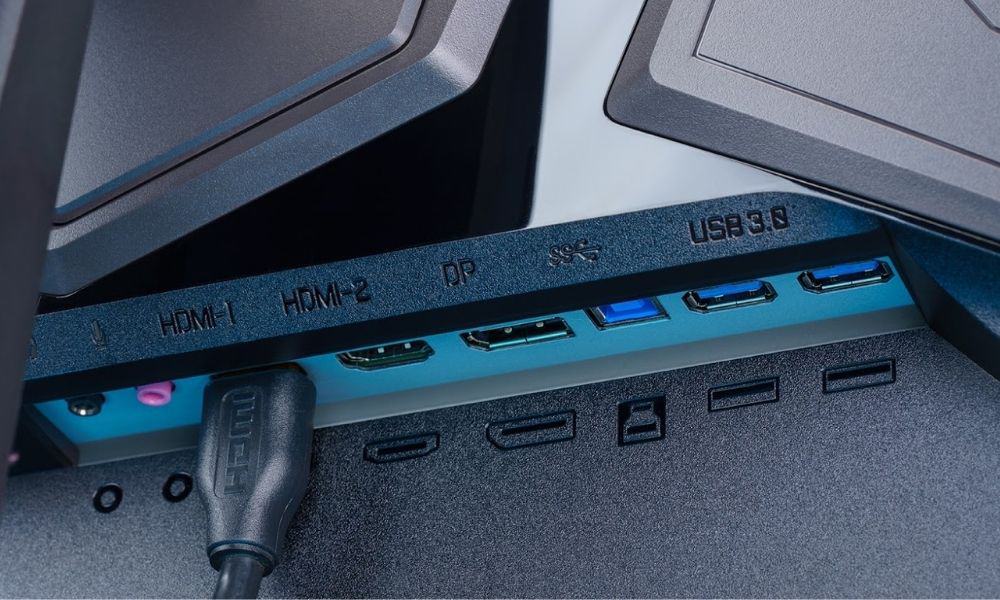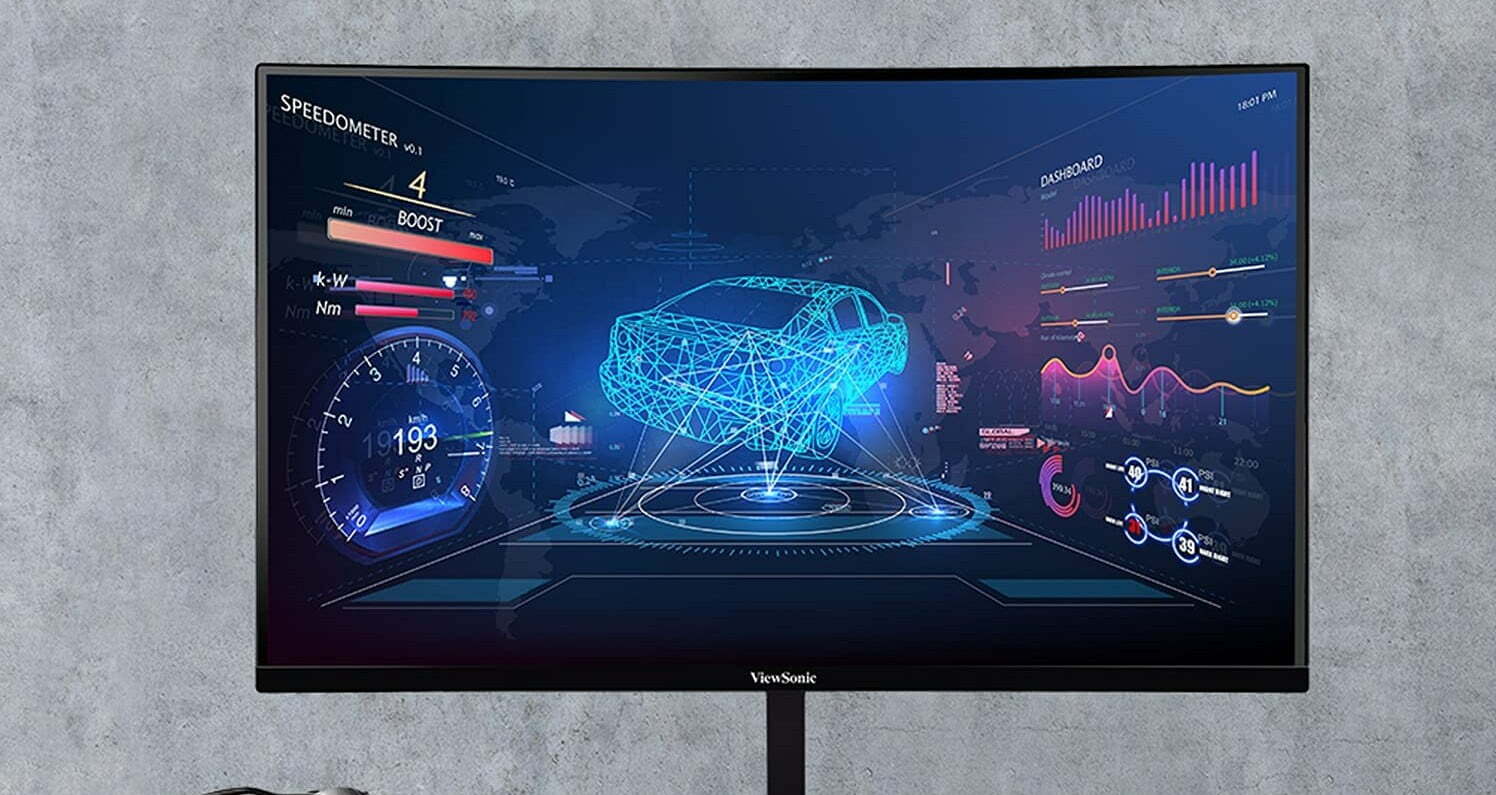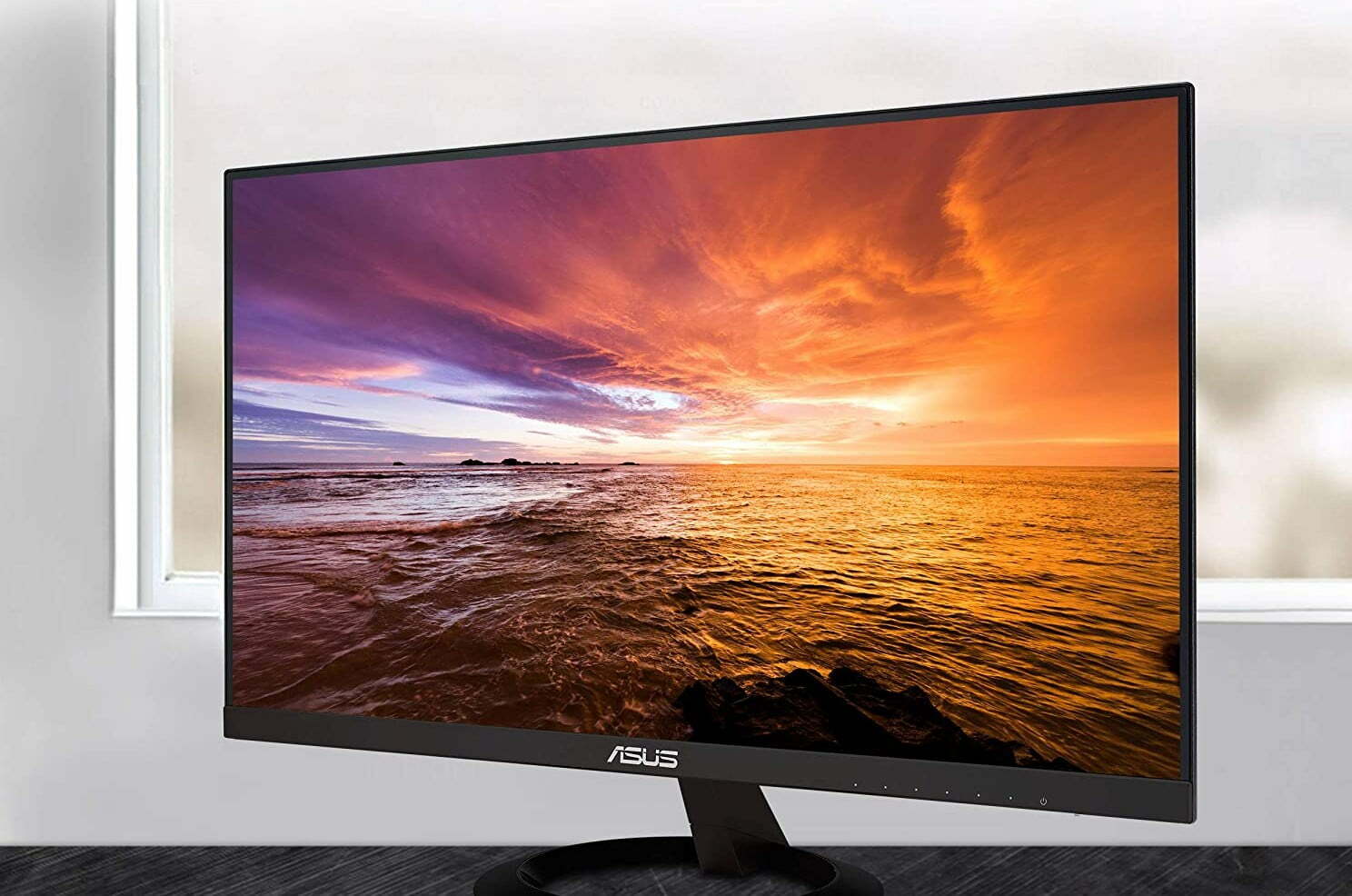Monitor ports are an integral part of its performance, governing the way signals are transferred from a source to a display. There are different monitor cable types and cable standards, including the analog-standard VGA (older equipment) to newer connections such as DisplayPorts that may not be available on older monitor technology types like a CRT monitor (check out this guide if you’re wondering what is a CRT monitor). Keep reading to learn more about the most common monitor ports in your favorite computer monitor, as well as the types of monitor ports needed based on application.
What are the Most Common Monitor Cable Types?
The most common monitor ports are VGA, DVI, HDMI 1.4, and HDMU 2.0. Each has its own distinctive uses and strength as it pertains to the strength of audio and video connection between your device and computer monitor.
DVI is known for its versatility, allowing for HDMI and VGA compatible analog signals, which you can learn more about DVI by visiting our resource on what is a DVI cable. However, one drawback is a larger than average connection size and limited standards, with a lack of support for different color spaces.
In terms of new standards, HDMI 1.4 is one of the most common monitor port types around. It can support multi-channel audio, ethernet data, different video formats, and a wider range of colors. You can maintain color accuracy on your monitor if you know how to calibrate the monitor. One knock on it is the lack of a locking mechanism and limited 30 Hz 4K resolution or wide 21:9 aspect ratio support.
Warning: One knock on it is the lack of a locking mechanism and limited 30 Hz 4K resolution or wide 21:9 aspect ratio support
Its immediate upgrade, HDMI 2.0, addresses all of the drawbacks of HDMI 1.4 minus the locking connector.
One last common monitor port is DisplayPort 1.2, which does support 60 Hz 4K resolution, multiple video streams, and 21:9 aspect ratios. Recently, DisplayPort 1.3 has been released, which supports 8K at 60Hz resolution for even greater firepower, and makes it easier to connect your PS4 to a monitor.
- Related Post: Which Monitor Panel Types are Best?
- Related Post: Is My Computer’s Refresh Rate Important?
What Monitor Cable Types Do I Need?
It all depends on the type of application you plan on supporting. For the highest fidelity, color range, and support possible, we recommend Displayport 1.2 or DisplayPort 1.3. If you are a simple email, spreadsheet, and web multi-tasker with no professional video, audio, or photo editing obligations, then HDMI 1.4, HDMI 2.0, or DisplayPort 1.2 is more than enough. After learning about the types of monitor connections, consider reading about how to fix input lag on a monitor in case you run into this while using your display.
- Related Post: Which Monitor Size Should I Get?
- Related Post: What Does LCD Monitor Mean?
STAT:
According to extron.com, the specification for HDMI 2.0 includes support of increased bandwidth up to 18 Gbps, resolutions up to 4K @ 60 Hz, simultaneous delivery of two video streams and up to four audio streams, 32 channels of audio, as well as other key enhancements.
Sources:
https://store.hp.com/us/en/tech-takes/what-monitor-ports-do-i-need#:~:text=HDMI%2C%20DisplayPort%2C%20and%20USB%2D,to%20connect%20to%20older%20devices.
https://www.xenarc.com/different-types-of-monitor-ports.html
https://www.eizo.com/library/basics/displayport_to_d-sub/
*https://www.viewsonic.com/library/tech/monitor-ports-and-usb-c-a-comparison-of-display-connections/
https://www.expertreviews.co.uk/accessories/pc-monitors/1404476/hdmi-vs-displayport-vs-dvi-vs-vga-every-connection-explained
https://www.techopedia.com/definition/8413/monitor-port
https://www.pcworld.idg.com.au/article/343389/visual_guide_display_cables_dvi_d-sub_adc_more/




































![Best 27 Inch Computer Monitor in [year] 27 Best 27 Inch Computer Monitor in 2025](https://www.gadgetreview.dev/wp-content/uploads/how-to-buy-the-best-computer-monitor.jpg)
![Best BenQ Monitors in [year] 28 Best BenQ Monitors in 2025](https://www.gadgetreview.dev/wp-content/uploads/best-benq-monitor-image.jpg)
![Best ASUS Monitors in [year] 29 Best ASUS Monitors in 2025](https://www.gadgetreview.dev/wp-content/uploads/best-asus-monitor-image.jpg)
![Best Dell Monitors in [year] 30 Best Dell Monitors in 2025](https://www.gadgetreview.dev/wp-content/uploads/best-dell-monitor-image.jpg)
![Best HP Monitors in [year] 31 Best HP Monitors in 2025](https://www.gadgetreview.dev/wp-content/uploads/best-hp-monitor-image.jpg)
![Best Lenovo Monitors in [year] 32 Best Lenovo Monitors in 2025](https://www.gadgetreview.dev/wp-content/uploads/best-lenovo-monitor-image.jpg)
![Best ViewSonic Monitors in [year] 33 Best ViewSonic Monitors in 2025](https://www.gadgetreview.dev/wp-content/uploads/best-viewsonic-monitor-image.jpg)
![Best Gigabyte Monitors in [year] 34 Best Gigabyte Monitors in 2025](https://www.gadgetreview.dev/wp-content/uploads/best-gigabyte-monitor-image.jpg)
![Best Monitors for PS4 Pro Gaming in [year] 35 Best Monitors for PS4 Pro Gaming in 2025](https://www.gadgetreview.dev/wp-content/uploads/best-monitors-for-ps4-pro-image.jpg)
![Best Monitor for Xbox Series X in [year] 36 Best Monitor for Xbox Series X in 2025](https://www.gadgetreview.dev/wp-content/uploads/best-monitor-for-xbox-series-x-image.jpg)
![Best Acer Monitors in [year] 37 Best Acer Monitors in 2025](https://www.gadgetreview.dev/wp-content/uploads/best-acer-monitor-image.jpg)
![Best MSI Monitors in [year] 38 Best MSI Monitors in 2025](https://www.gadgetreview.dev/wp-content/uploads/best-msi-monitor-image.jpg)
![Best SAMSUNG Monitors in [year] 39 Best SAMSUNG Monitors in 2025](https://www.gadgetreview.dev/wp-content/uploads/best-samsung-monitor-image.jpg)
![Best LG Monitors in [year] 40 Best LG Monitors in 2025](https://www.gadgetreview.dev/wp-content/uploads/best-lg-monitor-image.jpg)
![Best AOC Monitors in [year] 41 Best AOC Monitors in 2025](https://www.gadgetreview.dev/wp-content/uploads/best-aoc-monitor-image.jpg)
![Best Philips Monitors in [year] 42 Best Philips Monitors in 2025](https://www.gadgetreview.dev/wp-content/uploads/best-philips-monitors-image.jpg)
![Best Monitors For PUBG in [year] 43 Best Monitors For PUBG in 2025](https://www.gadgetreview.dev/wp-content/uploads/best-monitor-for-pubg-image.jpg)
![Best Stream Decks in [year] 44 Best Stream Decks in 2025](https://www.gadgetreview.dev/wp-content/uploads/best-stream-deck-image.jpg)
![Best Monitors for Streaming in [year] 45 Best Monitors for Streaming in 2025](https://www.gadgetreview.dev/wp-content/uploads/best-monitor-for-streaming-image.jpg)
![Best Monitors For Flight Simulator in [year] 46 Best Monitors For Flight Simulator in 2025](https://www.gadgetreview.dev/wp-content/uploads/best-monitor-for-flight-simulator-image.jpg)




















